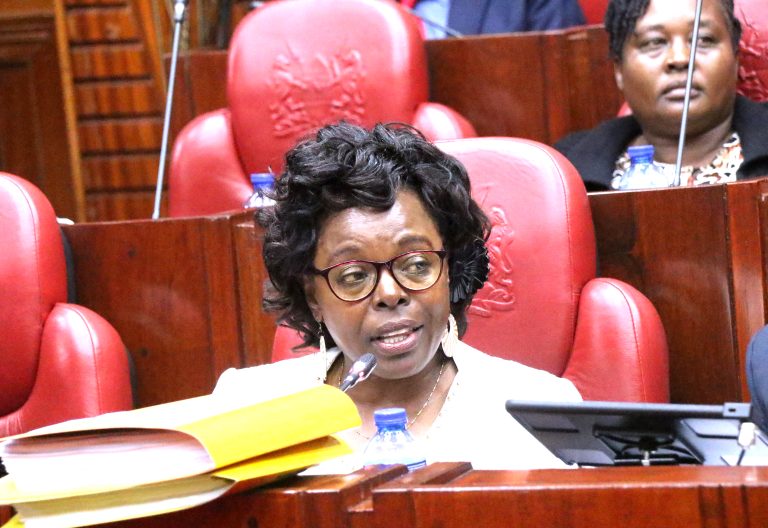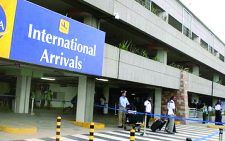Traders start counting losses after demos

What began as a call for justice, government accountability, and tax relief quickly spiralled into chaos as opportunistic individuals and goons infiltrated what was supposed to be peaceful demonstrations and wreaked havoc on businesses, especially in Nairobi’s city centre and major towns.
The hardest hit areas included Tom Mboya Street, Moi Avenue, Ronald Ngala Street, and Luthuli Avenue, where traders had tried to prepare for the worst by hiring extra security.
Despite their efforts, the destruction came swiftly and decisively. In the aftermath, shop doors were smashed open, shelves lay bare, merchandise was scattered or stolen, and surveillance cameras were torn down. Traders stood helplessly amid the ruins of their investments.
The attackers, disguised as part of the protesting crowd, targeted anything of value: mobile phones, laptops, fashion items, accessories, sound systems, and even cash tills.
The extent of the damage left business owners emotionally and financially broken. One female trader near Koja roundabout, who estimated her losses at Ksh2 million, struggled to explain how she would repay her loans or pay her children’s school fees.
“Why couldn’t it have remained peaceful?” she asked, staring blankly at the hollow shell of her once-thriving stall.
Other businesses were not just looted—they were burned to the ground. For traders like Geoffrey Onyango, whose three shops selling men’s wear and suitcases were reduced to ashes, the shock was unbearable.
With an investment of about Ksh3.5 million, most of it financed through loans from a commercial bank and a Sacco, Onyango said, even having insurance couldn’t soften the blow.
“Some of my clients had paid for collections in advance. I don’t even know where to start,” he said, visibly shaken. “My seed capital was just Ksh1 million. Everything else was on credit.”
From small traders to larger establishments, no one was spared. Supermarkets such as Naivas and Quickmart saw their shelves ransacked and their doors forced open.
Even automated teller machines (ATMs) were targeted, signalling just how brazen the looters had become. Security footage, where it wasn’t destroyed, captured masked individuals prying open drawers and fleeing with bags of stolen stock.
In the wake of the chaos, city officials tried to offer guidance. Geoffrey Mosiria, Chief Officer for Environment and General Inquiries at Nairobi City County, visited affected premises and advised business owners to file police reports and create inventories of their losses.
Widespread disruptions
“When suspects are arrested, it will be easier to trace items to their rightful owners,” he said.
But for many traders, this advice felt like little more than bureaucratic procedure.
“How do you list down thousands of items that are missing? How do you recover a bulk consignment of electronics or clothes when even your CCTV was stolen?” one trader asked bitterly.
The destruction was widespread and systematic. Many of the businesses targeted were clearly pre-selected.
“These were not random attacks,” a business owner said.
“They knew exactly which shops to hit, and they came prepared. Why didn’t they attack other parts of the city? Why only here?” His voice was filled with a mix of anger and disbelief.
Windows were shattered, shop fittings torn apart, and inventory either stolen or trampled beyond use. Those who had borrowed to restock ahead of what they hoped would be a profitable quarter now face the grim possibility of defaulting on their loans.
With some lenders already wary of a rising tide of bad debt, there are concerns that this wave of destruction will only push non-performing loans (NPLs) even higher.
According to the Central Bank of Kenya (CBK), the NPL ratio already stands at 17.6 per cent—a figure likely to spike further as traders miss repayments.
The ripple effects are profound. Lenders may become even more hesitant to extend affordable credit, especially to small and medium-sized enterprises (SMEs), choosing instead to park their capital in safer government securities.
This shift starves the private sector of funding, slowing economic recovery and job creation.
And while the government continues to encourage commercial banks to reduce lending rates, the high level of loan defaults complicates the process.
As businesses crumble under the weight of destruction, insurance claims, and unpaid debts, many may shut down altogether. Others will struggle to recover, if they manage to reopen at all.
This is as the Kenya Revenue Authority expects tax obligations to be met, even as revenue from these shuttered enterprises plummets.
The contradiction between government expectations and realities paints a stark picture of disconnect, one that traders fear will only worsen without swift reforms.
Unless meaningful interventions are made—both to secure the right to protest peacefully and to protect businesses from criminal infiltration—Kenya risks recurring cycles of economic disruption.
The looting that followed the June 25, 2025, protests is not just a law and order issue; it is a crisis that exposes the fragile state of enterprise in the country.
As the nation mourns young lives lost and calls for reform grow louder, the wreckage left behind in the CBD stands as a reminder that justice and accountability must be pursued without undermining livelihoods.














